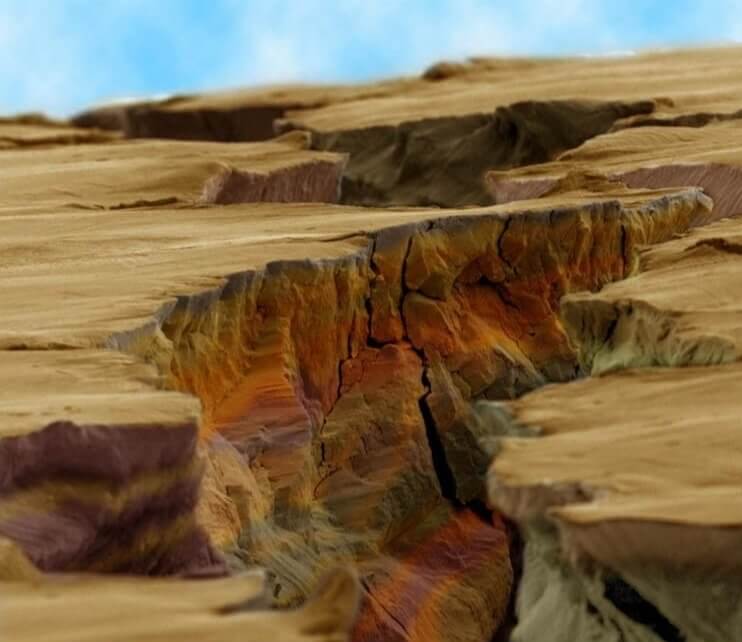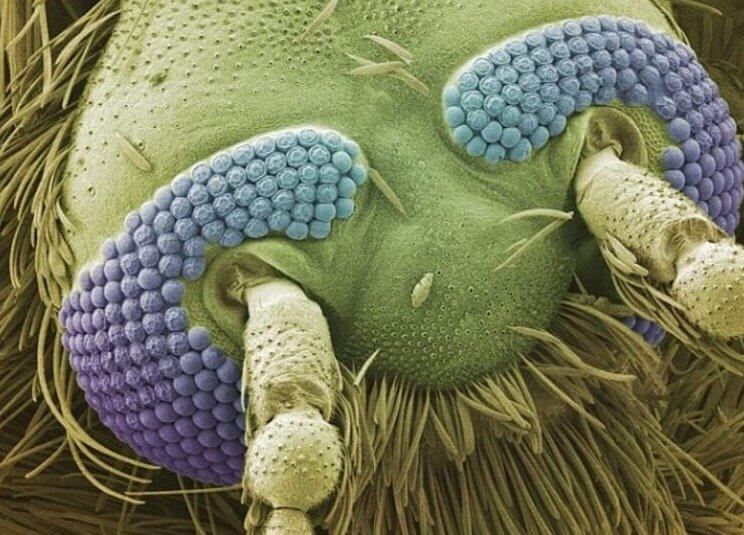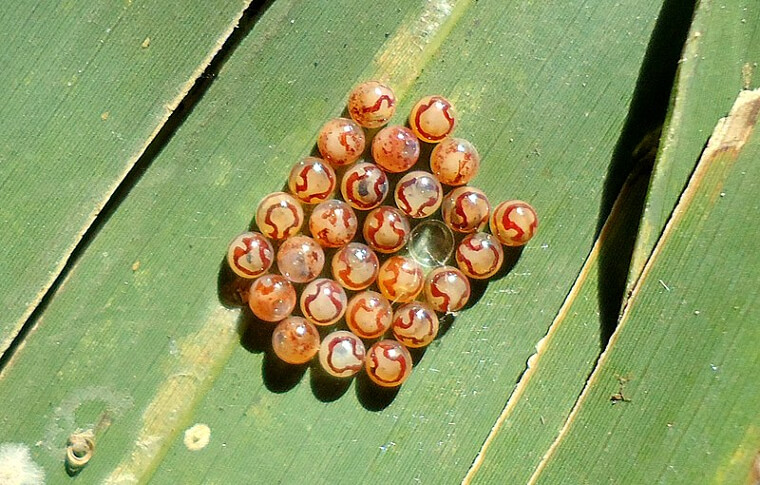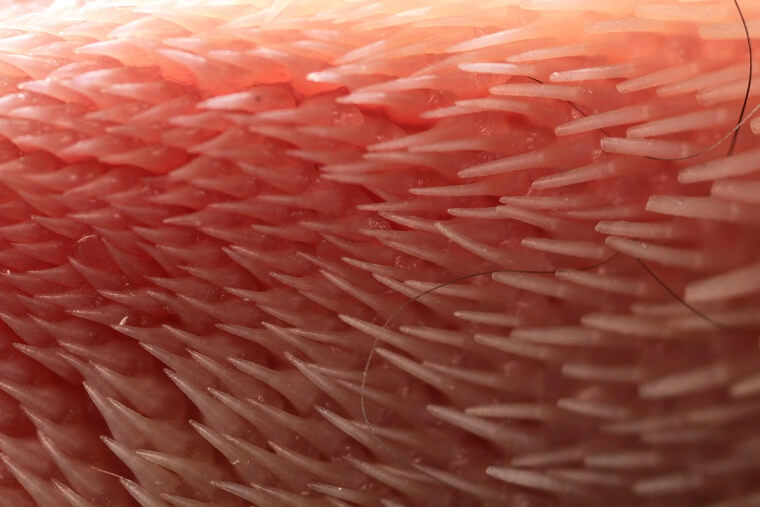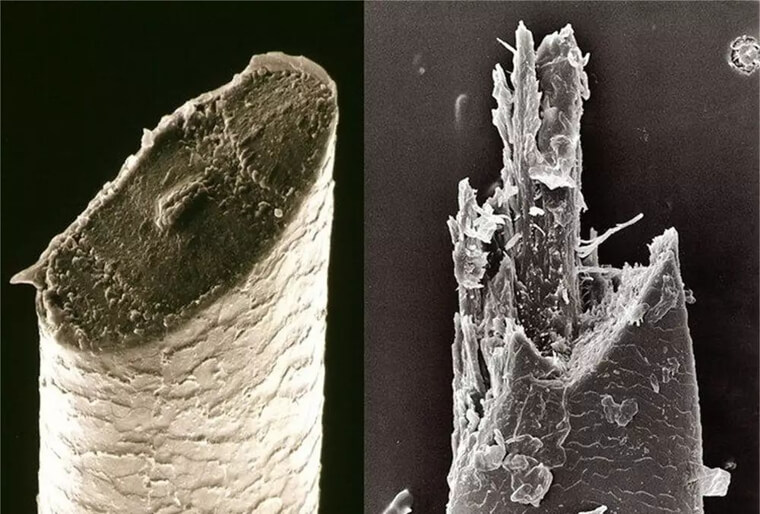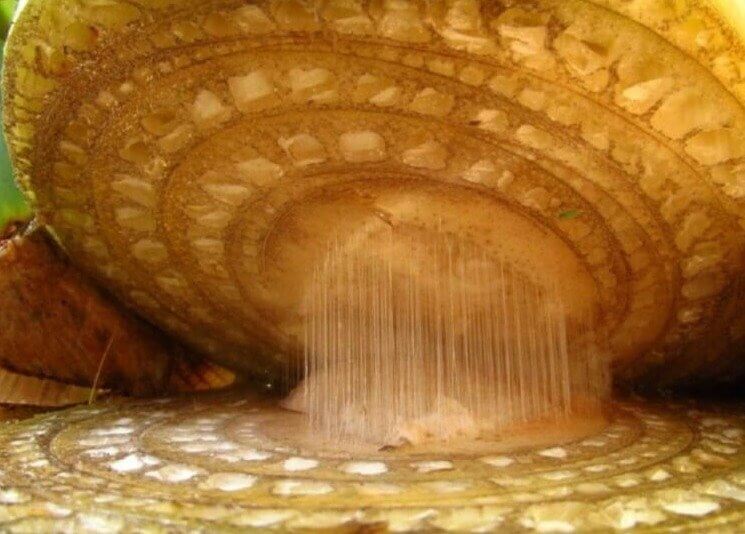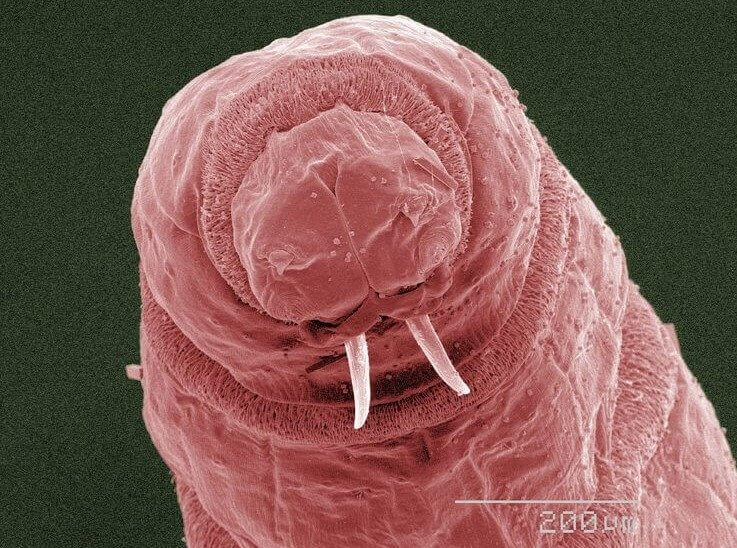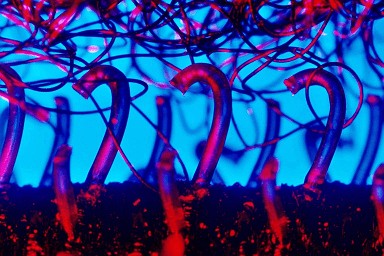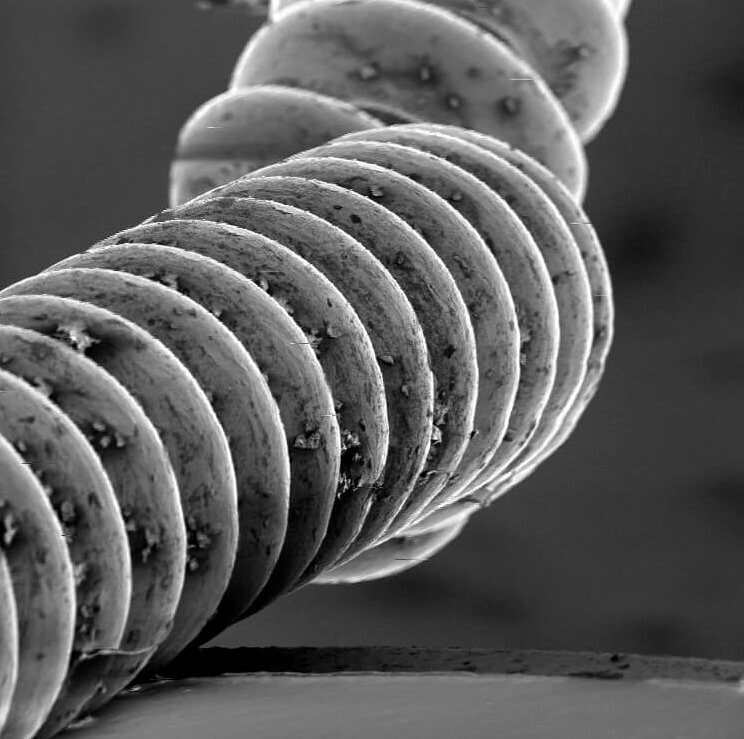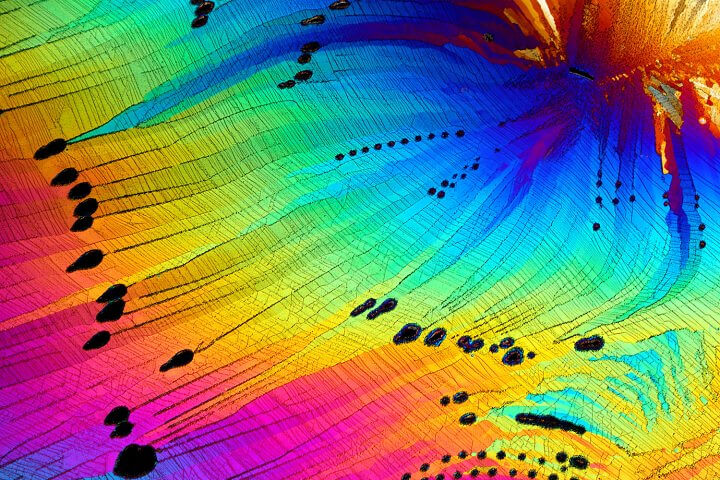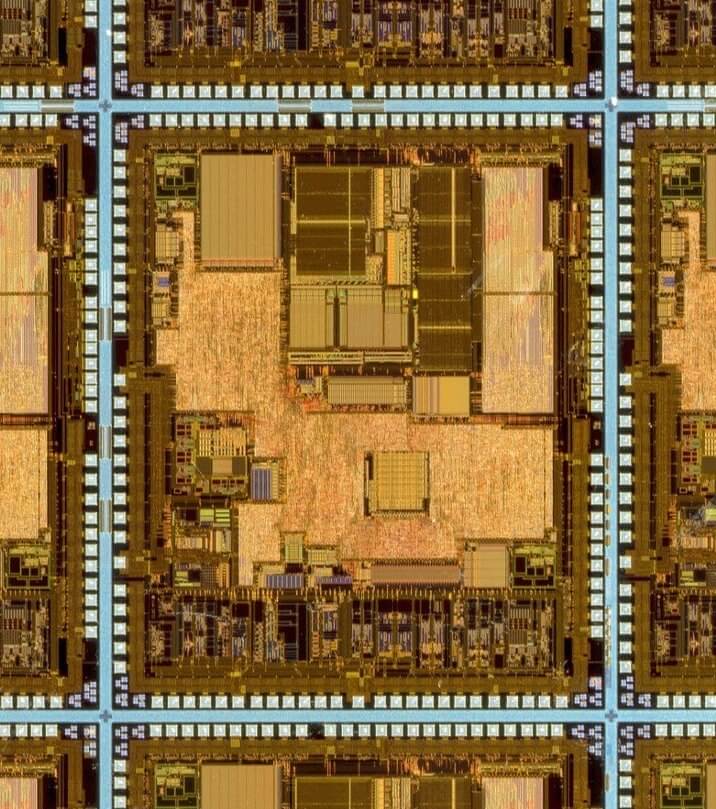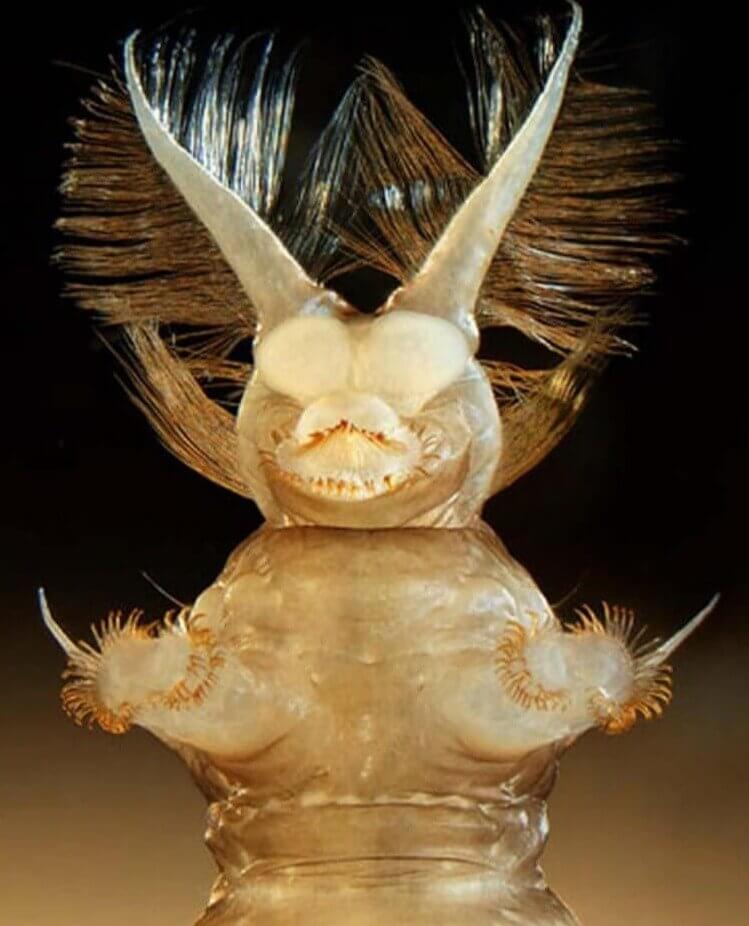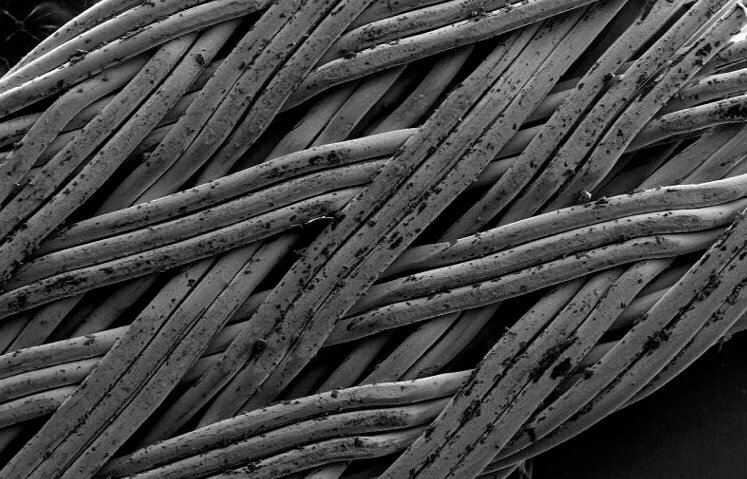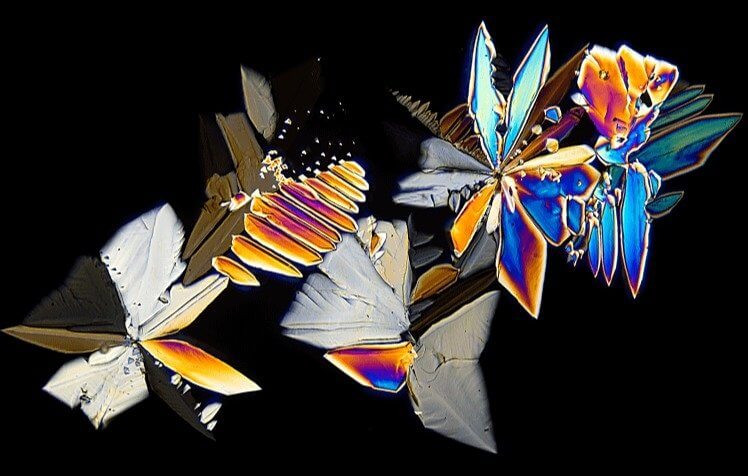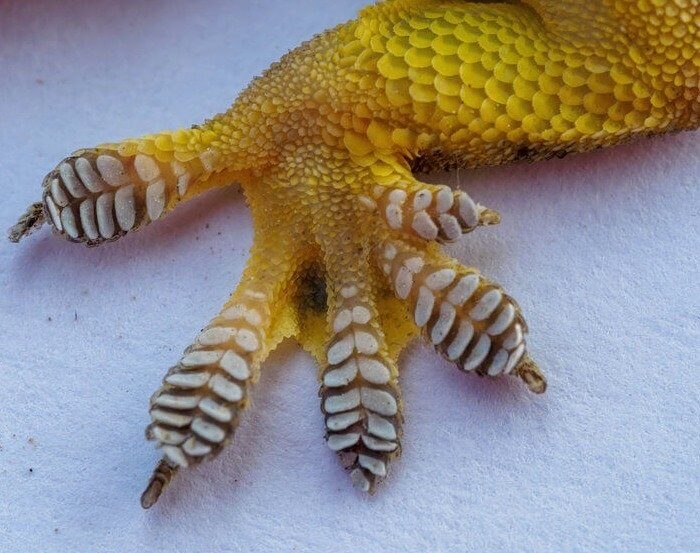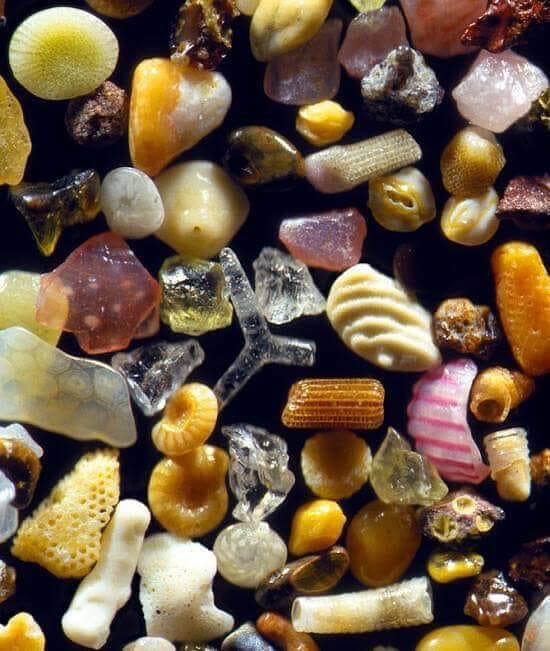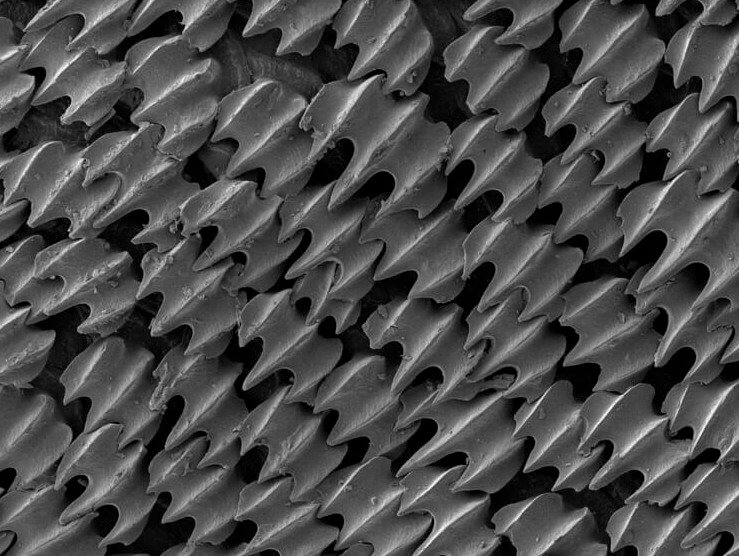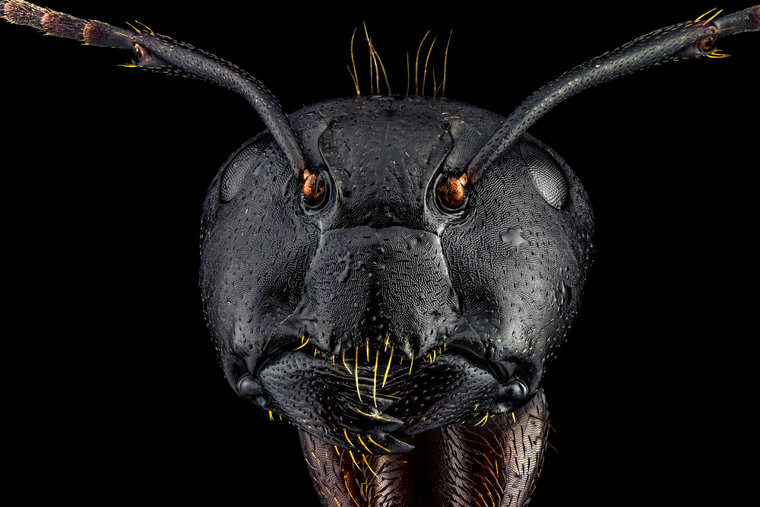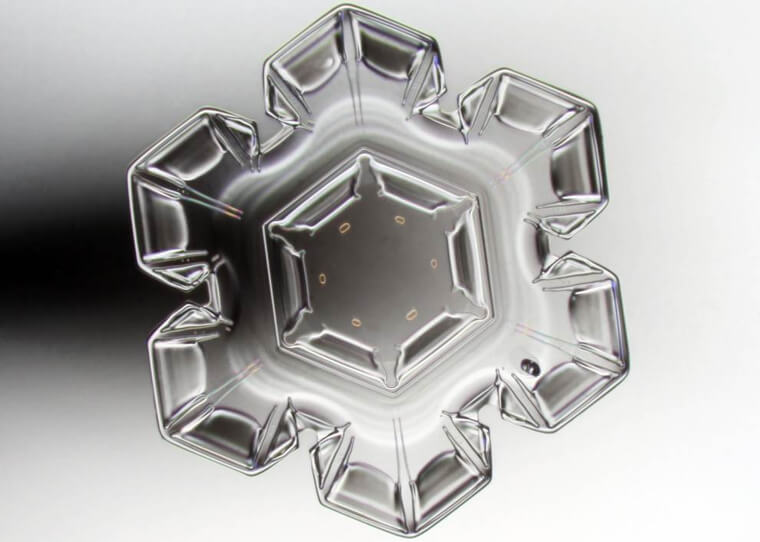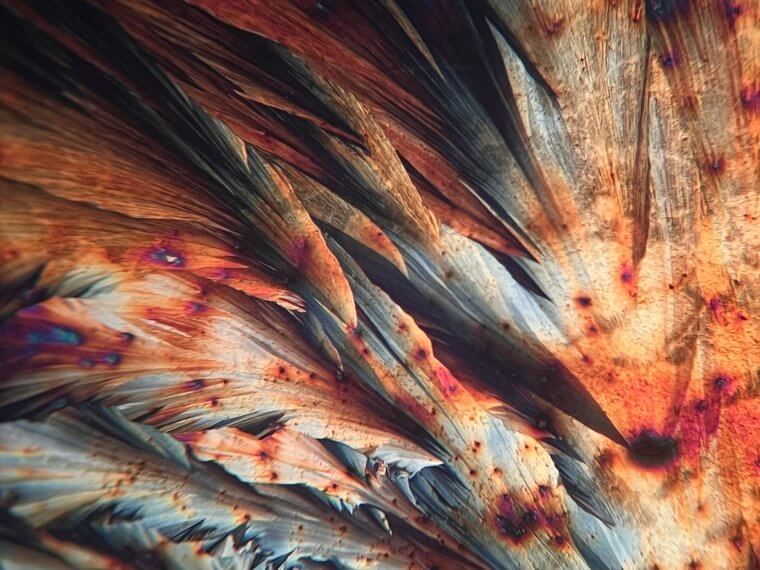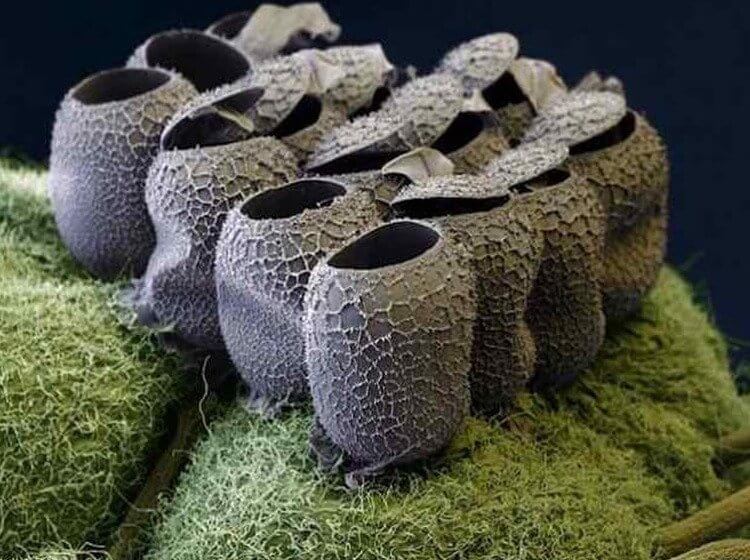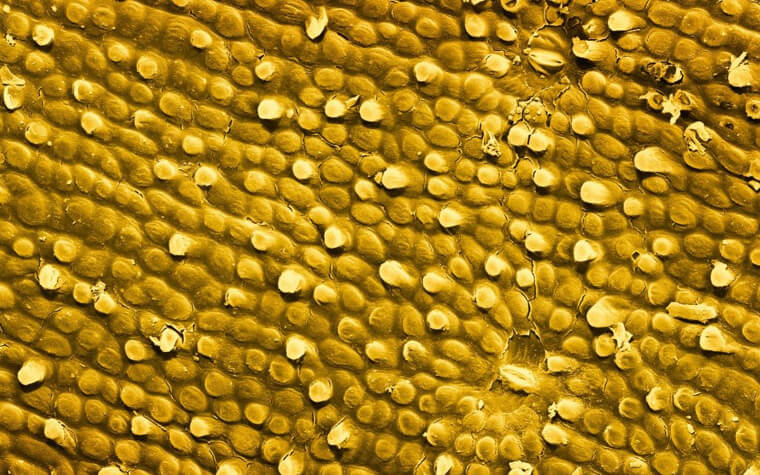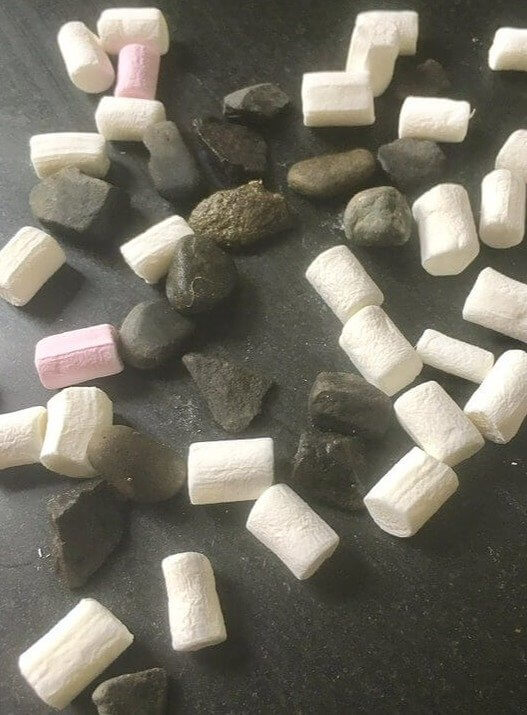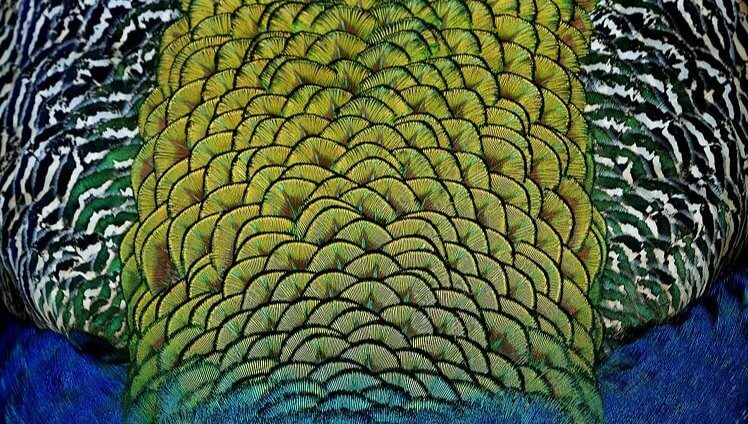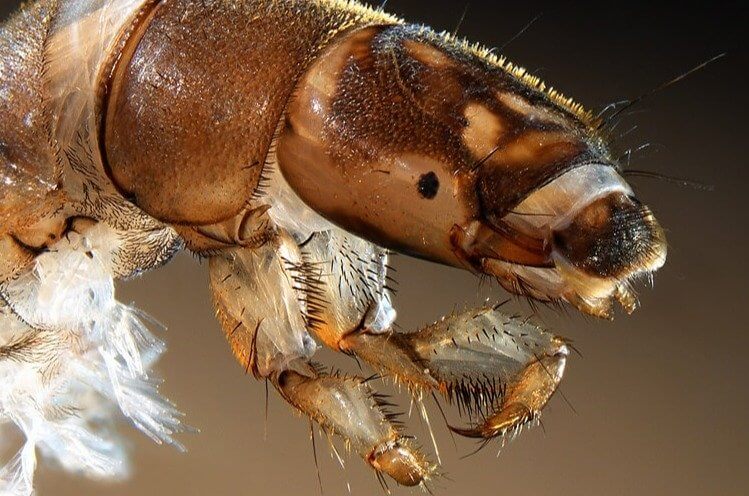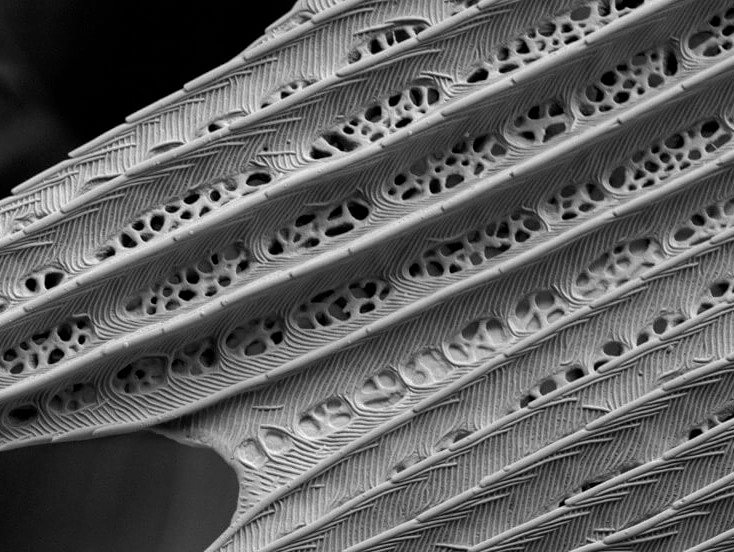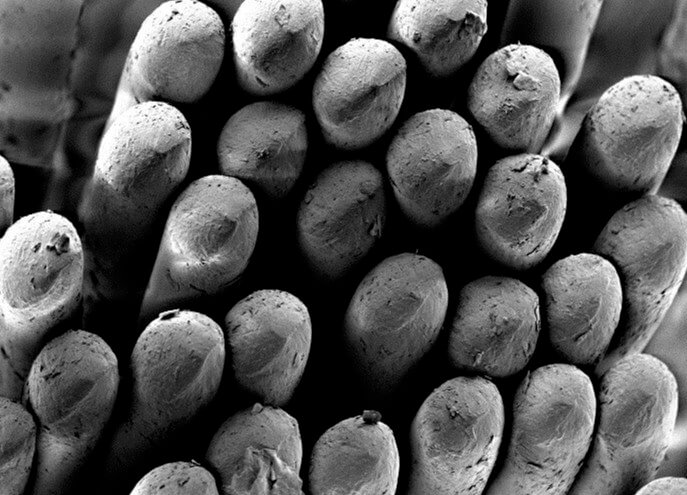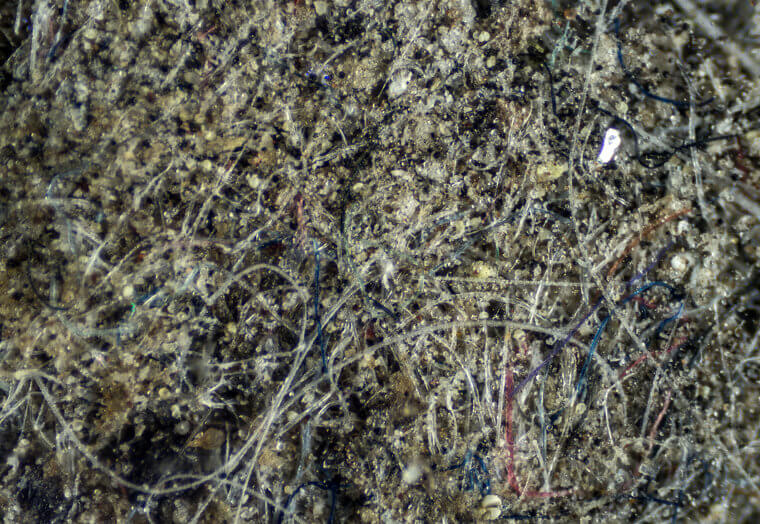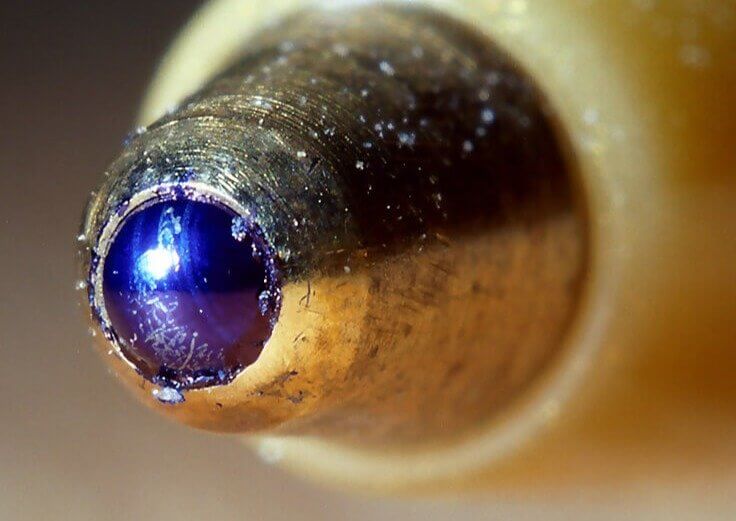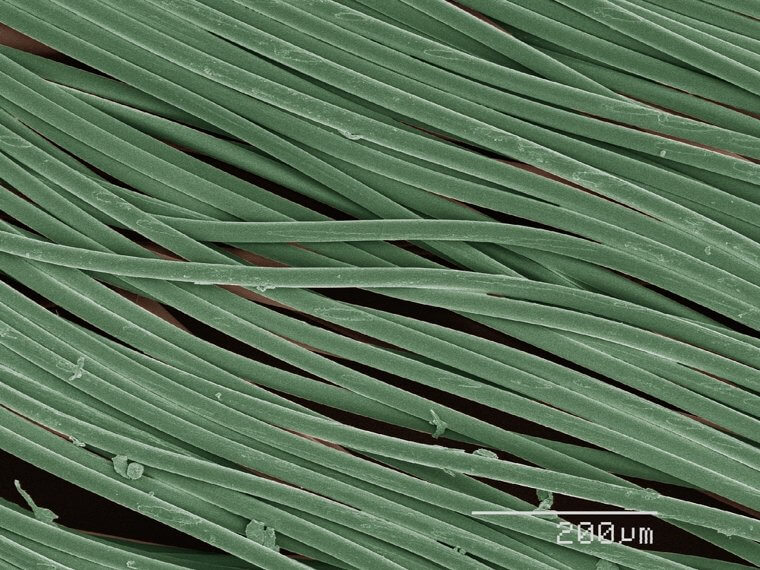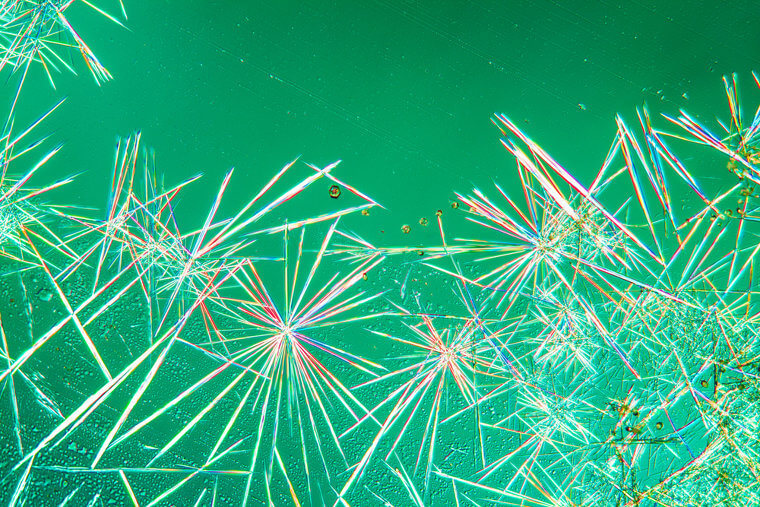Tiny Cracks In Steel
You might be forgiven for thinking this was a photo or a model of the Grand Canyon. It's not. Instead, it's an up-close look at a tiny microscopic crack in steel. Inside the "canyon," you can even see different layers or colors, similar to what you might see in an actual canyon. It's really fascinating to think that even after melting and molding, steel retains its natural look somewhat when you put it under a microscope.
We just wish we knew if the red coloring and the different bands on the inside of the tiny canyon were from rust or if they're just naturally that color.
A Mosquito
We know you don't need any more reasons to hate mosquitos, but just take a look at this image of a mosquito head. It's other-worldly. It reminds us of some kind of large beast or animal in a sci-fi or fantasy show. It has like a million different eyes (at least, we think those are eyes) and a bunch of fibers that make it look like it has a beard.
This was definitely not what we were expecting to see. We thought the head of a mosquito would look a lot more streamlined and skinny for some reason. You know, kind of like their bodies.
These Butterfly Eggs Look Like a Set of Marbles
If you had to take one quick look at the photo below and then a quick guess at what you were seeing, what would you say? We'd definitely bet that we were looking at a pretty set of marbles. But we'd be far from right. The photo below isn't of a children's toy; it's a set of butterfly eggs! That's right - this is what those gorgeous insects look like when first laid.
We can't help but wonder what touching these would feel like. While at first, they look smooth like marbles, once you look at them longer, they start to look a bit sticky and perhaps even flimsy.
An Up-Close Look at a Cat's Tongue
This photo shouldn't surprise too many cat owners out there. If you've ever been asleep at 6 a.m. and your cat has jumped on your bed and started licking your face, you know how uncomfortable and rough their tongues can be. It turns out cats' tongues feel rough because they have tiny spikes on them to give them a better grip when trying to hold something — like prey — in their mouths.
We're sure that it also comes in handy when grooming themselves, which they tend to do a lot, and when they want to wake their owners up in the morning.
Razor Shaved Versus Electric Trimmer
These are actually two separate photos compared side by side. The photo on the left shows a facial hair follicle after being cut by a traditional razor. The photo on the right shows a hair follicle after it was cut by an electric shaver. The difference here is pretty stark. The photo on the left shows a very clean cut, while the photo on the right shows a strand of hair that looks like it was mangled.
So, the next time you use that electric trimmer, just keep these two photos in mind. It might be better to go for a clean shave; your facial hair might just thank you.
The Inside of a Banana Tree
This inside look at a banana tree being sliced is pretty dramatic. At first glance, it looks like some alien planet or something you might see in a tropical jungle. So what are we actually seeing? Well, for starters, those tiny string-like things in the middle are just that — tiny strings that keep everything together. You can see them being pulled apart as the two halves of the banana tree are separated.
It's like watching a losing battle of tug-o-war. We're also really impressed with all of the different layers you can see here. When you think of a banana tree, you don't usually think of something with layers.
A Blue Bottle Maggot
This isn't some strangely-filtered image of a walrus. This is a microscopic snapshot of a maggot. And considering the endless differences between maggots and walruses, we really doubt they're close relatives in the history of animal evolution. Who knew that those gross little things have little fangs? This is what we attract when we forget to dispose of rotting leftovers or perishable foods. Well, we certainly won't forget anymore.
We don't want these fang, miniature walrus creatures anywhere near our home - especially our kitchen. Although, in a different life, it might make for a cute cartoon character.
A Look at How Velcro Works
This photo is a lot more fascinating than we thought it'd be. It's a microscopic look at velcro. After looking at it, you can see what makes the two sides stick together, as well as what makes it so easy to pull them apart. The tiny fibers end up getting stuck on the loops at the bottom of the image, and that creates the "sticking" effect we're used to.
However, those loops aren't complete, and they actually have little openings that allow the fibers to escape when you pull the velcro apart. It's actually all kind of ingenious.
A Guitar String
Guitar strings don't look all that fascinating when we see them on a guitar. However, they're kind of weird looking when viewed from a microscope. This guitar string looks like some kind of giant worm that's just wriggling around. Of course, it's just a manmade metal string, and there's a pretty good reason for those ribs you see in the string. Without those, guitar strings wouldn't vibrate as much as they do.
This might also explain why guitar strings cause so many callouses, as those tiny shards of metal between the ribs don't look like they're super great for the skin.
The Active Ingredient in Caffeine
There's another photo on this list that shows how caffeine contains different various when viewed under a microscope. However, this photo shows the active ingredient in caffeine, and it's a bit more psychedelic. It shows a rainbow of colors all pulsing outwards as if we were watching a stream of water or something similar. It really is fascinating that coffee actually looks like this when put under a high-powered microscope.
It's also fascinating to think about what it'd be like if these were the colors we saw when making a pot of coffee. Just think about a rainbow-colored cup of coffee for a second - sounds awesome, right?
A Microchip That Looks Like a Toy City
We all know that silicon microchips are extraordinarily small, but this photo helps paint a clear picture of just how small and detailed they are. We can see all of the tiny connectors (or whatever those are called) and how tightly they're packed together. It's really quite amazing to think that humans are capable of making something this small and detailed. It also makes sense why there are so few companies out there that can actually make one of these.
Aesthetically, this sort of looks like an aerial shot of a city or warehouse district. The "buildings" are arranged in neat little rows and look like the opening shot of a film.
A Fly Larva
You probably didn't need another reason to dislike flys or their larvae, but we figured we'd give you one anyway. This photo shows a fly larva up close and personal, and it's literally terrifying. Just think what life would be like if this thing was our size. It's got blades on its top two "hands" and a mouth filled with outward-pointing teeth. It looks like it was dreamed up for a horror film or video game.
The larva even looks like it's laughing maniacally in this photo. Yeah, this thing is terrifying, and we're kind of glad we can't actually see the features on this one with our own eyes.
Woven Steel
This isn't a photo of normal steel. Instead, it's probably a photo of something like a steel cable, which contains steel that's been woven together in the same way you might weave fibers. We can see just how tightly they managed to weave everything together here, which is honestly fascinating, considering how hard steel is. That said, even from this image, you can tell that the steel wires are very rigid.
This photo also makes us wonder what the reason is behind using three strips of steel for each fiber or wire. Perhaps it's to add strength or even more rigidity?
Coca-Cola Sugar
We've seen that some of our favorite drinks - like coffee - look different and even artistic under the microscope. Well, it turns out the same is true about Coca-Cola. The shot below doesn't capture the famous drink itself but rather crystallized sugar from inside the soda. It's incredible how science can sometimes resemble modern art. We're sure plenty of people wouldn't think twice if they saw this printed and hanging in a friend's home.
Nature always finds a way to surprise us. We would've never guessed these are crystalized sugar from Coca-Cola.
No Wonder Geckos Can Climb on Any Surface
Here's a weird fact for you. Geckos can climb on nearly any surface except for Teflon. How do they do it? Well, it's not hard to see from this up-close image of a gecko's toe. You can see that pretty much every aspect of it is built for climbing. They have extremely pointy and sharp claws at the end of their toes, allowing them to climb up most surfaces easily.
Luckily, not too many people out there actually eat geckos, so they probably won't have to worry too much about having to climb out of Teflon pots anytime soon.
Microscopic Sand
We're really in love with this photo. It could just be an assortment of shells, corrals, and tiny gems pulled from the ocean, but it's not. It's actually a photo of sand that was taken using a high-powered microscope. All of the items shown here are pretty much the same things you might go out searching for when you're spending the day at the beach, only much, much smaller.
Now, the next time you're at the beach, you can look down at your feet and know that you're basically standing on a pile of sea debris. Albeit, stunningly gorgeous sea debris.
Shark Skin Under a Microscope
Hopefully, you're never close enough to a shark to make out the patterns on its skin. But, if you were to rub your hands against their skin, then you might feel something akin to a cat's tongue but sharper. This is an up-close photo of a shark's skin, and as you can see, they have what looks like a bunch of tiny blades. This is for a couple of reasons.
Firstly, it's to help them swim faster in the water as it means less resistance. Secondly, it also provides them with tougher skin for when things try to take a bite out of them.
No, That's Not a Fake Scene Out of a Scary Movie
We don't want to frighten you, but this creature is probably outside your home right this very moment. This creepy-looking thing is nothing more than one of the most common insects in our lives: an ant. That's right - this is a magnified, full-frontal image of an ant. We weren't big fans even before seeing this image, but now we're actually scared! Just look at that intimidating thing. Can you guess its real-life size?
We're not sure, but we know it can't be too big. And why didn't anyone ever tell us that ants have fangs? We'll be going to buy some anti-ant sprays now.
Snow Just Gets More Magical the Closer You Look
If you were to ask someone to identify the general shape of a snowflake, they could probably point one out in a lineup. So, the shape in this photo isn't all that surprising. However, what is surprising is just how clear and symmetrical snowflakes actually are. Nearly every corner and pattern in this snowflake looks as if it were carved by a machine. Of course, that's not actually the case.
Instead, this snowflake and millions, possibly billions, more like it were made by mother nature, and they all fell from the sky. It really is amazing what nature is capable of if you think about it.
Sugar Water
This photo kind of resembles another photo on this list that shows caffeine under the microscope. And this is what it looks like when you combine sugar and water. It kind of reminds us of a stained glass window that was shattered. You could also probably compare it to another art piece. Either way, it's definitely really mesmerizing to stare out. Sugar does basically look like a crystal when you look closely, so maybe the water kind of "shattered" that crystal.
However, that still wouldn't explain all of the different streaks of color we see running through the image, some of which don't look all that random. There's also the point where everything meets in the bottom right.
A Collection of Butterfly Eggs
This photo shows a collection of butterfly eggs that have been laid on a raspberry plant. Each tiny pod probably contained a hungry caterpillar that is now out eating and getting ready to turn into butterflies themselves. And we have to say that the pods aren't as alien-looking as we were expecting. Sure, they're pods, but they're not as scary or ugly looking as some of the other tiny insects on this list.
If you're interested, there are also a lot of really amazing photos online of clusters of different butterfly eggs, and each has its own unique but fascinating look. There's also another butterfly egg on this list that's just fantastical as this cluster.
The Texture on a Banana Skin
We really wish we knew what side of the banana we were being shown in this photo. If it's the outside, then this pattern is responsible for supplying some grip. If it's the inside, then it's responsible for countless cartoon characters' trips to the hospital. Either way, it's a really interesting texture that kind of resembles the cobbled streets you might see in the old part of a city or town.
It could also be compared to the skin of a reptile. It's not exactly scaly, but it looks rougher than what'd you'd expect the skin on a banana to look like.
These Aren't Rocks and Marshmallows - They're Salt And Pepper
Most people use salt and pepper pretty much every day. This microscopic photo of the two side by side kind of confirms what we think about the two kitchen staples, but it's also really weird seeing them up close. We know that salt looks like tiny white crystals, but we never expected pepper to look like brown boulders or stones when held up next to the salt. It's really quite amazing.
Together, the two look like smores, or at least what you might imagine an advertisement for smores might look like. However, you probably don't want to start eating salt and pepper by itself.
Finally, Something That Looks Like We Thought It Would
We have seen many close-up images on this list that left us baffled. We'd never guess that coffee or butterfly eggs look like that magnified; it's quite fascinating. But it's also refreshing to see something that, when put under a microscopic lens, looks just as we'd expect it to. The beauty of the peacock feather does not disappoint when magnified; it is just as colorful and eye-catching as always.
Like many animals, the peacock uses its assortment of feathers to attract mates. In fact, they use their special feathers to perform what looks like a sort of dance ritual; they rattle and shiver them to impress a potential mate.
A Caddisfly
They say that shrimp are the bugs of the sea, and after seeing this photo of an actual water bug called a caddisfly, we can see why. This thing looks almost exactly like a shrimp. Don't get us wrong, we're never going to stop eating shrimp, but we do wish we had never looked at this photo in the first place. This little guy eats both meat and plants and spends most of his time in a burrow.
However, they do eventually grow wings and start flying around after they leave this stage of their lives. They then go back to the water to lay their eggs.
A Moth's Wing
This beautiful photo shows what a moth's wing looks like when it's put under a microscope. The ridges are there to add strength and keep the wings from simply folding and flapping around every time a strong wind appears. And the intricate holes are there to allow a little bit of air to pass through so that the moth can still "steer" while in the air and battling the wind.
The whole structure really looks like something out of a sci-fi movie or some kind of intricate architectural structure. It's a really fascinating look at something that kind of doesn't look all that interesting when observed through the human eye.
Sugar Under the Microscope
You would be forgiven for thinking that the image below is of ice cubes. But, as we've learned, many things are not what they appear once inspected under a microscope. In this case, these cubes are actually grains of sugar (and a little bit of coffee granule on the side). That's right - these imposing images are just a sprinkle of what many of us put into our cup of coffee every morning.
Of course, this is a magnified photo of refined sugar; raw sugar might look entirely different. Just as the two taste different, they must look at least slightly different.
Your Toothbrush
Okay, this isn't your specific toothbrush, but this is what the bristles on your toothbrush look like under a microscope. We can see how each fiber is pretty much all the same. They're all slightly rough and shaped like long tubes. It really is kind of crazy the stark difference in appearance when looking at organic and inorganic items on this list. The organic items still look "alive," even at an extremely tiny level.
They are also much more complex, even more so than even something like the silicon microchip on this list. Things like these bristles look very much manufactured and pretty much lifeless. We suppose that's not necessarily a bad thing when it comes to toothbrushes.
Dust Under a Microscope
This is one of those photos where we really wish we had a bit more information. However, we do know that this is basically what most dust looks like when you put it under a high-powered microscope. We can see a pretty wild collection of a lot of different things. There's what appears to be some stringy organic or inorganic material, along with a couple of rock-looking shapes in the back.
It's weird to see tiny things that look like nothing to us have large differences in color and shape upon closer inspection.
Threading a Needle
Threading a needle isn't nearly as easy as you might think it'd be. It can actually lead to a lot of frustration, especially when you have the thread as slick as you think you can get it, but then at the last second, some invisible force prevents the thread from going through the needle. It turns out that's not actually some invisible force, but instead, it's just the frayed strings of thread.
Here we can see just how many frayed pieces there is every time we try to thread a needle, and it helps explain a lot, actually. Mainly, it's kind of crazy that it's possible to do it by hand in the first place.
A Tiny Starfish
This might just be the only animal on this list that doesn't creep us out when we look at it under a microscope. This baby starfish is just as adorable when it's small as it'll be when it gets big. It even has the same shape, albeit with less pronounced stars. In addition, we can see a bunch of tiny tentacles, which are probably used for locomotion since we doubt it's able to stick very well at this point.
If you look at this photo extremely closely, you can also kind of make out tiny suction cups that are either on the other side or just starting to form.
The Tip of a Ballpoint Pen
The blue, planet-like shape in the image below is a close-up of a ballpoint pen. We might take pens for granted now, but there was a time when they were objects of awe and admiration. They allowed people to write in ink on rough surfaces, including paper, for a much longer time than its predecessor, the fountain pen. The ballpoint ultimately became widely used thanks to it being easier to write with.
The ballpoint pen was also more disposable and replaceable than the fountain pen, making it a better option for everyday people on the go who might lose things or even younger teens and kids.
Dental Floss Before Use
Can you believe those pool noodle-looking things are a close-up of that thin, thin dental floss some of us use? And if you don't use dental floss, this is your sign to start. We included a photo of dental floss before use because dental floss after use was quite gross. So take our word for it - there is plenty of stuff between your teeth that need to come out.
We definitely think that every dentist out there should enlarge this photo and just put it up in their office so that patients are encouraged to floss more.
An Up-Close Look at Rolling Papers
Rolling papers don't look like they have much going on when we're just using our eyes. But if you were to put one underneath a microscope, this is what you'd see. Rolling papers actually look like dead leaves fallen in autumn - just without all of the beautiful colors. It's kind of mesmerizing, but it also makes us wonder just how healthy it is to use rolling papers.
We're sure inhaling pre-rolled stuff probably isn't much better, if not worse. But we're satisfied with just seeing it from the lens of a microscope.
Coffee Up Close
Putting coffee under a high-powered microscope might not sound like it'd produce the most exciting images out there — coffee is usually just black when we drink it. However, this image of coffee shows what our morning staple looks like when you put it under a microscope, and it's pretty shocking. Coffee looks anything but plain. Instead, it contains a myriad of colors that just makes us happy for some reason.
Coffee actually containing a rainbow of colors kind of makes sense, considering the effect it has on us in the morning. Another fun fact about coffee: if the bubbles in your morning cup are rainbow-colored, that just means that your coffee is fresh.

